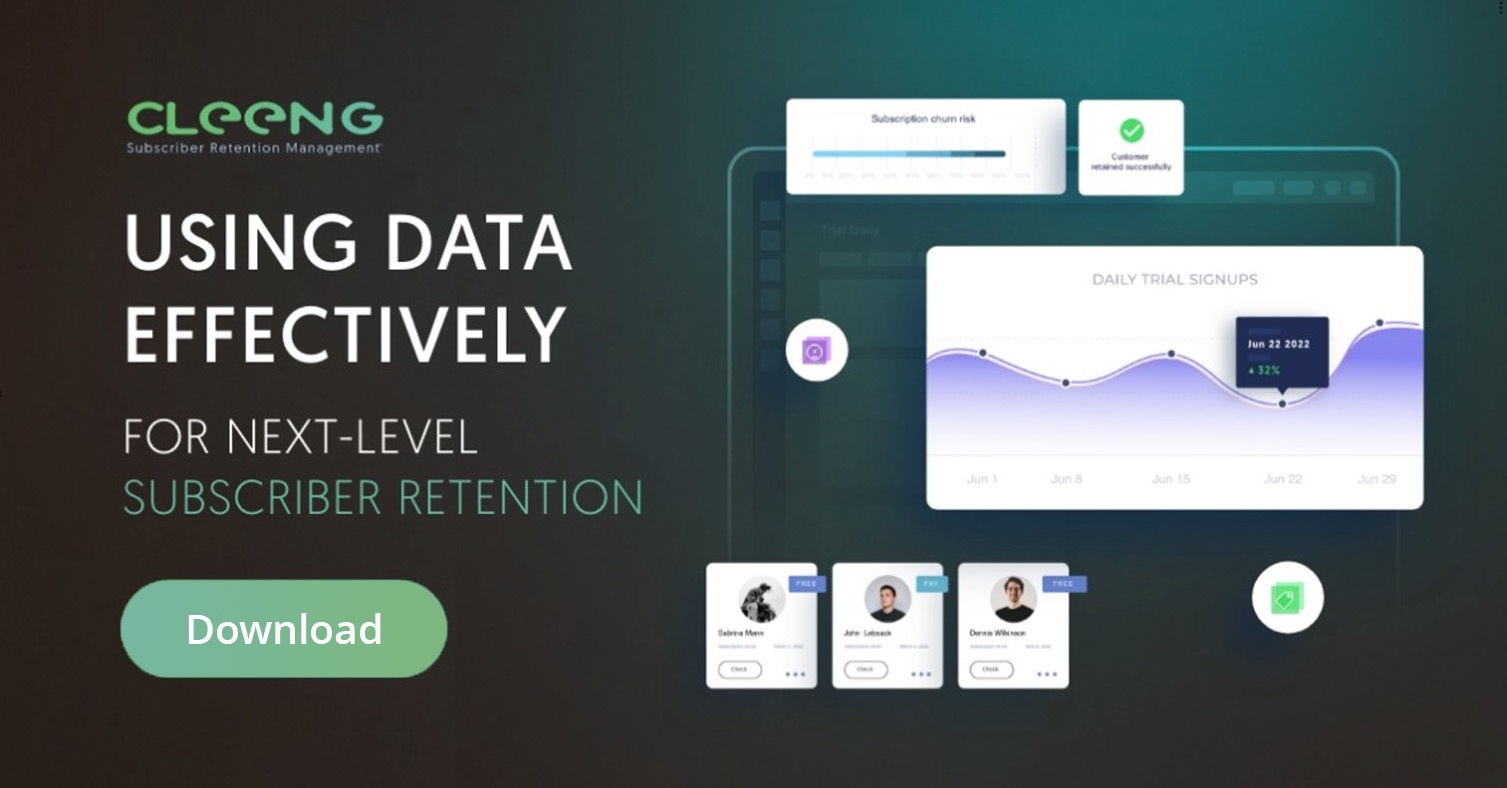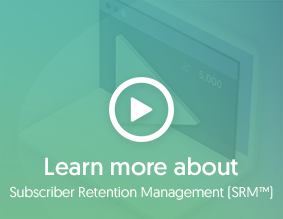In today’s crowded subscription market, sustainable growth depends on customer retention, and that starts with tracking the right subscription metrics.

It’s no secret that sustainable growth comes from customer retention, and subscription businesses live and die by their data.
With marketing channels becoming crowded and customers tired of endless new subscription offers, holding onto your current customers is what sets successful companies apart in the digital subscription industry. But in 2025, brands can no longer solely rely on surface-level analytics like new sign-ups.
Whether you're optimizing acquisition, reducing churn, or increasing retention, the most successful subscription brands measure what matters and act fast.
Here are 10 essential metrics every subscription business should track (and why they matter).
- Customer Lifetime Value (CLV)
- Customer Acquisition Cost (CAC)
- Monthly Recurring Revenue (MRR)
- Churn Rate
- Subscriber Retention Rate
- Average Revenue Per User (ARPU)
- Trial Conversion Rate
- Resubscription Rate
- Payment Success Rate
- Self-Resolution Rate (customer support)
Key subscription metrics for D2C businesses
1. Customer Lifetime Value (CLV)
Customer lifetime value (CLV), or subscriber lifetime value (SLV), refers to the total revenue subscribers generate over their entire relationship with a digital subscription business.
This essential subscriber retention metric helps determine profitability and can guide customer acquisition and retention strategies. CLV is one of the most crucial subscription metrics used to determine the health of a subscription business.
Customer Lifetime Value formula
CLV = Average Revenue Per User (ARPU) × Average Customer Lifespan
How to improve Customer Lifetime Value
In order to improve CLV, D2C subscription brands must start by reducing churn and upselling to existing subscribers. By personalizing the subscriber experience and tailoring your offerings to subscriber needs, you get a higher chance of retaining a subscriber long-term.
2. Customer Acquisition Cost (CAC)
Customer Acquisition Cost measures the average cost of acquiring a new subscriber through sales and quality digital marketing efforts. Understanding CAC helps you determine whether your acquisition strategy is sustainable. Ideally, CLV should be at least 3x your CAC.
Customer Acquisition Cost formula
CAC = Total Acquisition Costs / Number of New Subscribers
How to improve Customer Acquisition Cost
Lower CAC by optimizing ad spend, improving conversion funnels, and investing in high-performing organic channels like social media, SEO, and email marketing. You can also opt for customer referrals, which tend to be successful across the D2C subscription industry, with some brands seeing 25x return on spend.
3. Monthly Recurring Revenue (MRR)
MRR is the total predictable revenue you earn each month from active subscribers. It tracks financial health and reflects the impact of churn, upgrades, subscription downgrades, and new signups.
Monthly Recurring Revenue formula
MRR = Number of Active Subscribers × Average Monthly Revenue per Subscriber
How to improve Monthly Recurring Revenue
Boost MRR through pricing optimization, upsell strategies, and reducing involuntary churn by opting for a reliable billing solution for subscriptions.
4. Churn Rate
Churn rate measures the percentage of customers who cancel their subscription within a specific time frame. Simply put, the lower your churn rate, the better. Even small increases in churn can dramatically lower your revenue over time. It’s one of the most critical KPIs for subscription businesses.
Churn Rate formula
Churn Rate = (Lost Subscribers ÷ Total Subscribers at Start of Period) × 100
How to improve Churn Rate
Use churn prediction tools like Cleeng’s ChurnIQ, reduce friction in the user experience, and re-engage at-risk users with personalized win-back campaigns.
5. Subscriber Retention Rate
Subscriber Retention Rate measures how many subscribers stay with you over a specific time frame. A high retention rate signals strong product-market fit, good user experience, and long-term value generation, which are all crucial for subscription success.
Subscriber Retention Rate formula
Retention Rate = ((End Subscribers – New Subscribers) ÷ Starting Subscribers) × 100
How to improve Subscriber Retention Rate
Focus on early onboarding and fostering subscriber engagement to see your subscriber retention rate rise. Attracting offerings and a wide variety of content are also great retention drivers.
6. Average Revenue Per User (ARPU)
ARPU calculates the average revenue generated per active subscriber over a specific period of time.
By tracking changes in ARPU, digital subscription providers can identify if their retention strategies effectively drive revenue growth. ARPU helps assess monetization efficiency. It’s key when segmenting subscribers, forecasting growth, or comparing pricing plans.
Average Revenue Per User (ARPU) formula
ARPU = Total Revenue ÷ Number of Active Subscribers
How to improve ARPU
In order to improve ARPU, introduce premium tiers, bundle offers, or add-on features. Personalization and targeting can also improve upsell performance.
7. Trial Conversion Rate
Trial Conversion Rate shows the percentage of trial users who become paying subscribers. Tracking the Trial Conversion Rate helps you understand customer behavior, revealing why some trial users convert while others don’t. Low conversion rates often signal issues with onboarding, pricing, or perceived value. For example, the average D2C subscription free trial conversion rate is 57% (with Netflix converting an impressive 93% of free trial users!).
Trial Conversion Rate formula
Trial Conversion Rate = (Paying Customers ÷ Total Trial Users) × 100
How to improve Trial Conversion Rate
Use in-trial nudges with tools like Engagement Layer, remove friction from the upgrade flow, and tailor onboarding based on usage behavior.
8. Resubscription Rate (Winback)
Resubscription Rate tracks how many users return and re-subscribe after canceling. This metric reflects brand loyalty and the effectiveness of your win-back strategies.
Resubscription Rate formula
Resubscription Rate = (Returning Subscribers ÷ Total Canceled Subscribers) × 100
How to improve Resubscription Rate
Follow up with personalized re-engagement emails, targeted discounts, or seasonal offers that reignite interest.
9. Payment Success Rate
This measures the percentage of successful recurring payments processed without failure. Low success rates often lead to involuntary churn. It also affects revenue predictability and cash flow. Payment success rates can be tracked with Cleeng's Merchant dashboard.
Payment Success Rate formula
Payment Success Rate = (Successful Payments ÷ Total Payment Attempts) × 100
How to improve Payment Success Rate
Implement dunning management workflows, support local payment methods, and ensure your billing system retries failed transactions intelligently.
10. Self-resolution rate (customer support)
Self-Resolution Rate measures the percentage of customer support issues resolved by subscribers without needing to contact a support agent (all users who resolve their issues via a Help Center or by talking to a chatbot). A high self-resolution rate reflects an intuitive help experience and strong knowledge base. It reduces support volume, boosts customer satisfaction, and lowers operational costs.
Self-Resolution Rate formula
Self-Resolution Rate = (Self-Resolved Issues ÷ Total Support Issues) × 100
How to improve Self-Resolution Rate
Invest in a well-structured, searchable help center, AI-powered assistants continuously update FAQs based on real support queries and usage trends. For example, tools like Cleeng's Hi5 are tailor-made for digital subscriptions.
Track subscription metrics that matter. Build your D2C empire.
You now have a comprehensive list of the top 10 subscription retention metrics to track and combine to get the full picture behind your retention performance.
Ready to turn insights into impact? See how Cleeng’s retention-driven SRM® suite helps you retain subscribers and boost lifetime value. See our interactive demos or contact us.

.webp?width=1719&height=345&name=ChurnIQ%20(1).webp)




